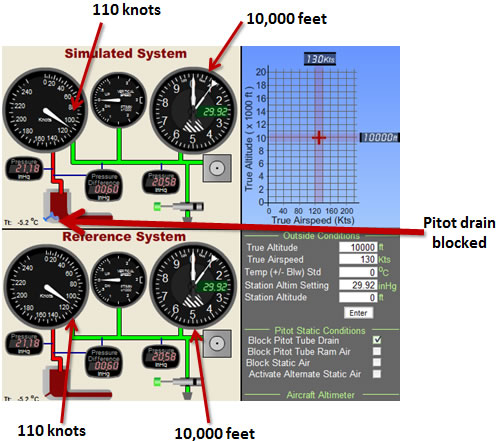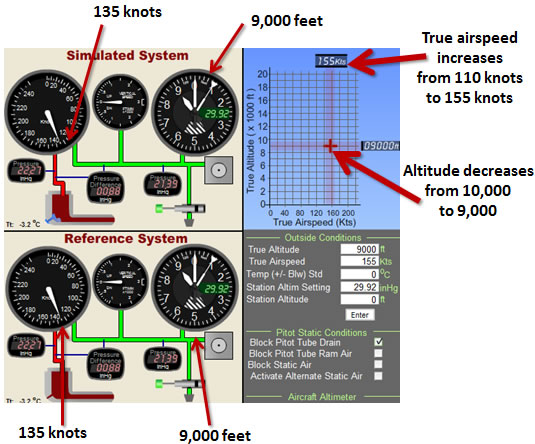|
3a. Pitot tube drain blocked; ram air and static air ports remain unobstructed.

Fig 4-30 Pitot tube drain blocked at an altitude of 10,000 feet and 130 knots true airspeed.
At 10,000 feet and at a true airspeed of 130 knots (which corresponds to 110 knots of indicated airspeed in this case) only the Pitot Pitot tube drain is blocked (Fig 4-30). There should be no effect on the instruments since the Pitot tube drain is too small to affect the pressure of the ram air significantly in the Pitot tube chamber.

Fig 4-31 Aircraft descends 1000 feet and increases airspeed by 25 knots.
The aircraft then increases airspeed to 155 knots true airspeed (corresponding to 135 knots) and descends to 9000 feet (Fig 4-31). In both the simulated system and the reference system the indications by the instruments are the same. In other words if only the Pitot tube drain in the Pitot tube is blocked there is no effect on the instruments. Note the pressure of 22.27 inHg which is the ram air pressure sensed by the airspeed indicator is not altered by that drain obstruction. In addition, the vertical speed indicator and altimeter are not connected to the Pitot tube where the drain is located and therefore cannot be affected. The vertical speed indicator and altimeter are only affected by static port blockages since they rely on static air.
If the ram air then becomes obstructed after the Pitot tube drain, the problem becomes scenario 3b. If the static air becomes obstructed after the Pitot tube drain, the problem becomes scenario 1c.
|

